Subatomic is a deck-building game about creating atoms for 2 to 4 players that plays in about 40-60 minutes. Use your own deck of subatomic particles to build up and claim point-scoring atoms like Helium and Lithium, and buy additional subatomic particles to improve your deck over the course of the game. As your deck improves, you’ll be able to build more complicated atoms, and since everyone is building their decks separately, there is plenty of room to out-strategize and out-compete your opponents. Subatomic is a great game for people new to deck-building, but there are also deeper strategic elements for those more experienced, like Scientist cards that grant special abilities and End Goals that require you to compete for which atoms to score points on. Use the included ‘Science Behind the Game’ booklet, crowdsourced by Ph.D. doctors and scientists around the world, to learn all about the science of atoms and how that science is incorporated into the game.
INTRO TO DECK BUILDING: Subatomic is a card drafting strategy game where 2-4 players compete to build point-scoring atoms by playing subatomic particle cards from their unique deck. You can purchase new cards and add them to your deck throughout the game, making everyone’s strategy different. Build atoms like Helium and Beryllium, and gain bonus points for claiming the most of each element. Subatomic is designed to be an approachable and fun board game for ages 14+.
ACCURATE SCIENCE: Designed by John J. Coveyou, a chemical engineer, Subatomic was designed with real science in mind. Your deck begins with up quarks, down quarks, and photons. Use these cards to obtain protons, neutrons, and electrons which improve your deck. You’ll soon be building atoms, claiming Element Cards to score points, and learning organic chemistry along the way. Included with the game is a Science Behind booklet, crowdsourced from a diverse team of Ph.D. doctors and scientists from around the world.
EDUTAINMENT THAT’S FUN: Genius Games creates science-accurate games that are not only educational, but engaging, strategic, and fun. Subatomic is NGSS and STEM compliant, is American MENSA recommended, was a MENSA Mind Games finalist, and is currently used in many high school classrooms worldwide. Subatomic is also revered by gamers, having received the coveted Seal of Excellence from The Dice Tower.
SCIENCE HISTORY: As you construct atoms, you can also spend energy recruiting famous scientists into your deck, like Albert Einstein, Erwin Schrodinger, and Marie Curie. These famous inventors were famous for their contributions to the field of molecular chemistry and grant you special powers to give you an edge over your opponents.
PLAYER COUNT AND GAME TIME: Subatomic is a board game for 2 to 4 players, and plays in about 40-60 minutes. This family board game also makes a great gift for chemists, doctors, scientists, teachers, kids, and teens. No matter the group, Subatomic will provide lots of fun while stimulating the scientist inside all of us!
Customers say
Customers enjoy the fun and educational aspects of the game. They find it challenging and say it’s their favorite chemistry game from genius games. The cards and pieces are well-made, and the game teaches atomic concepts. Overall, customers describe the game as great and well-made.
AI-generated from the text of customer reviews


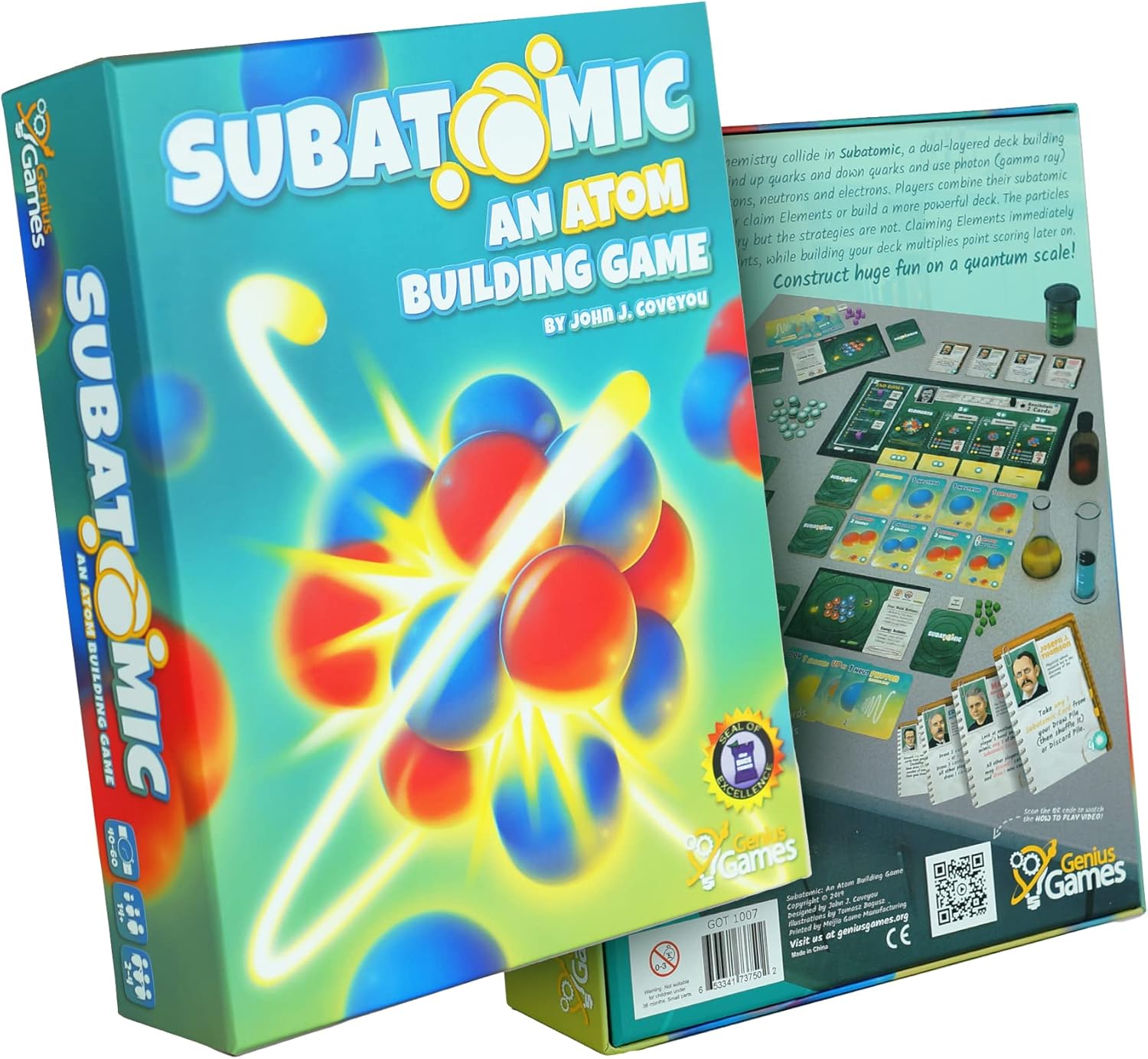
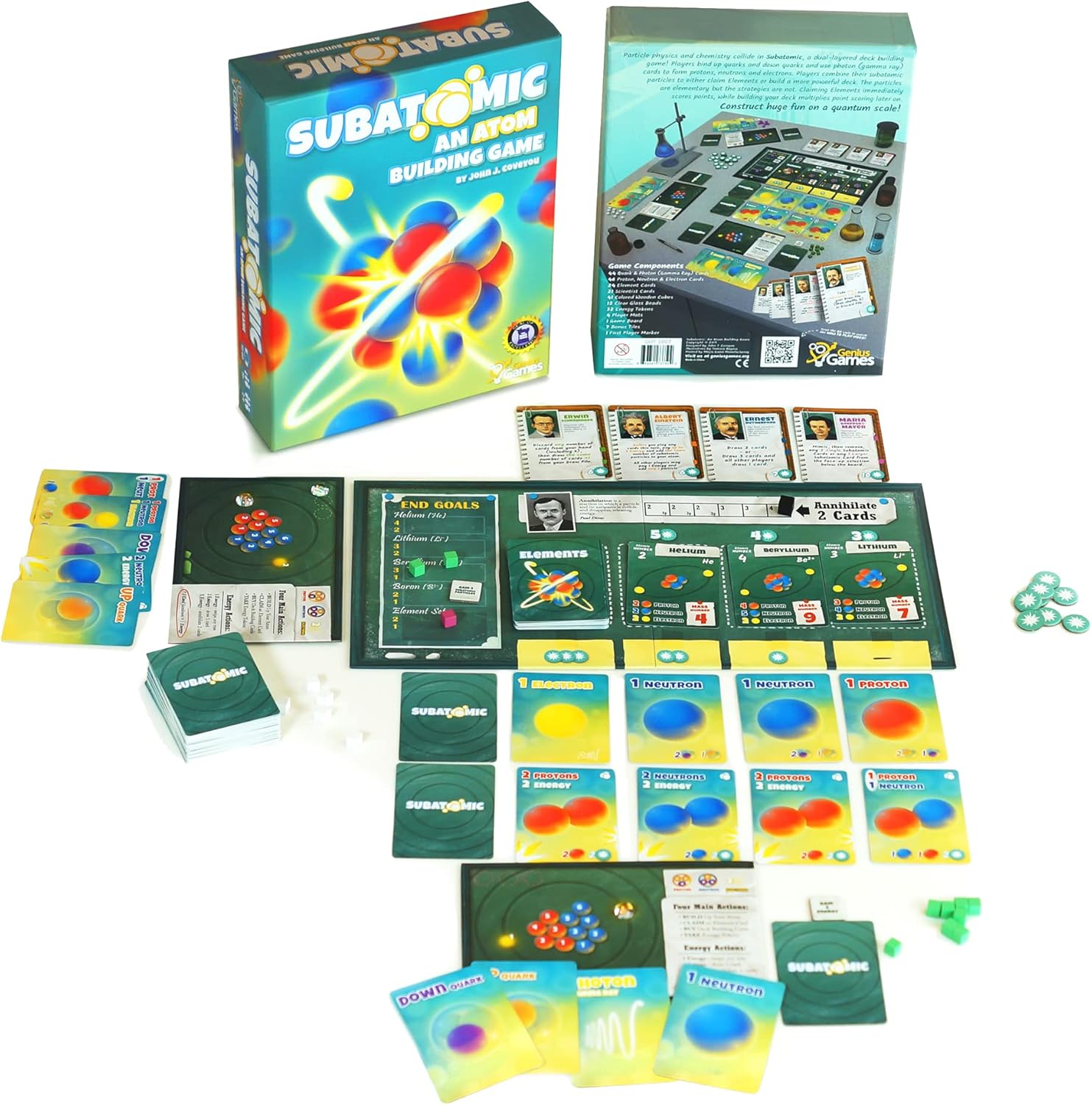
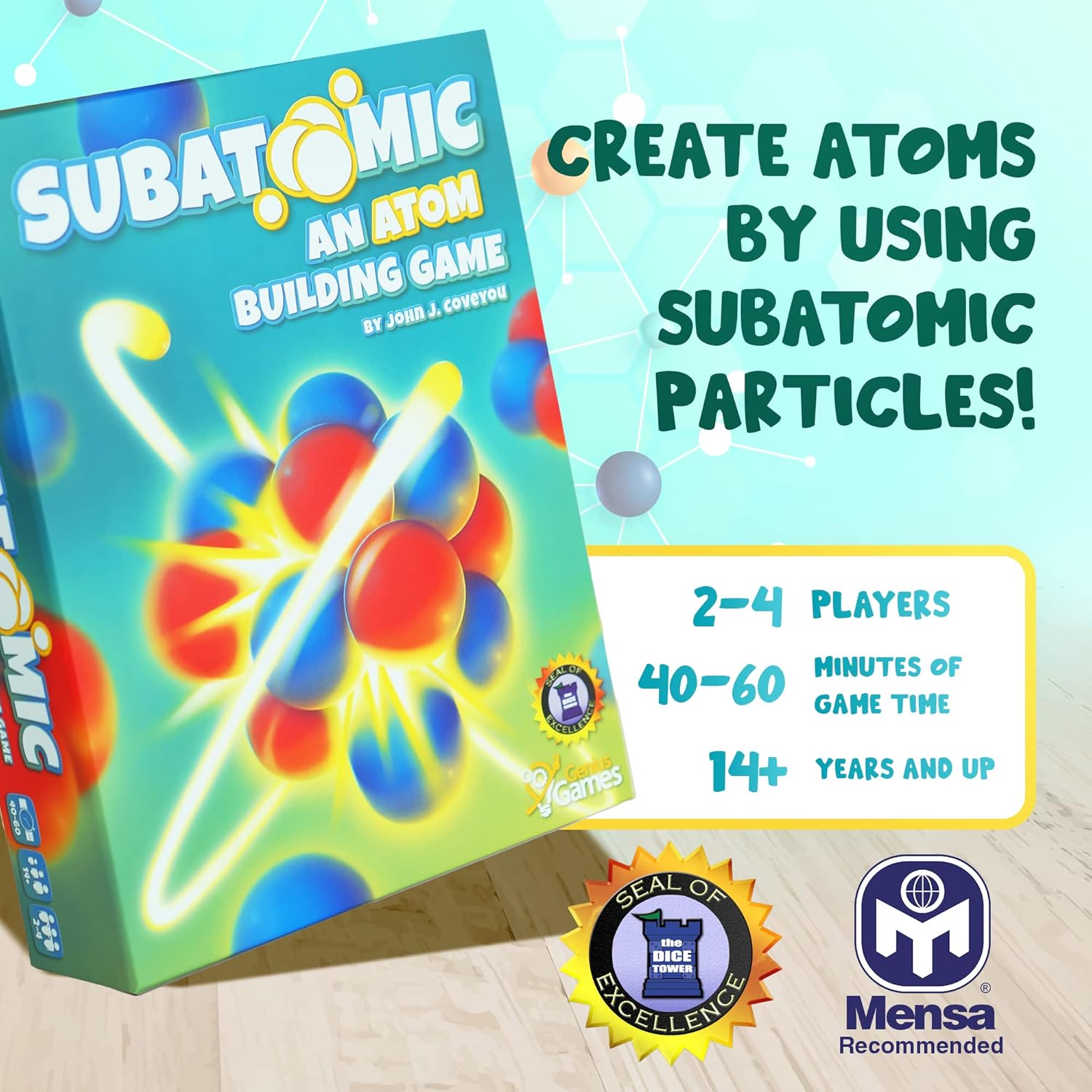
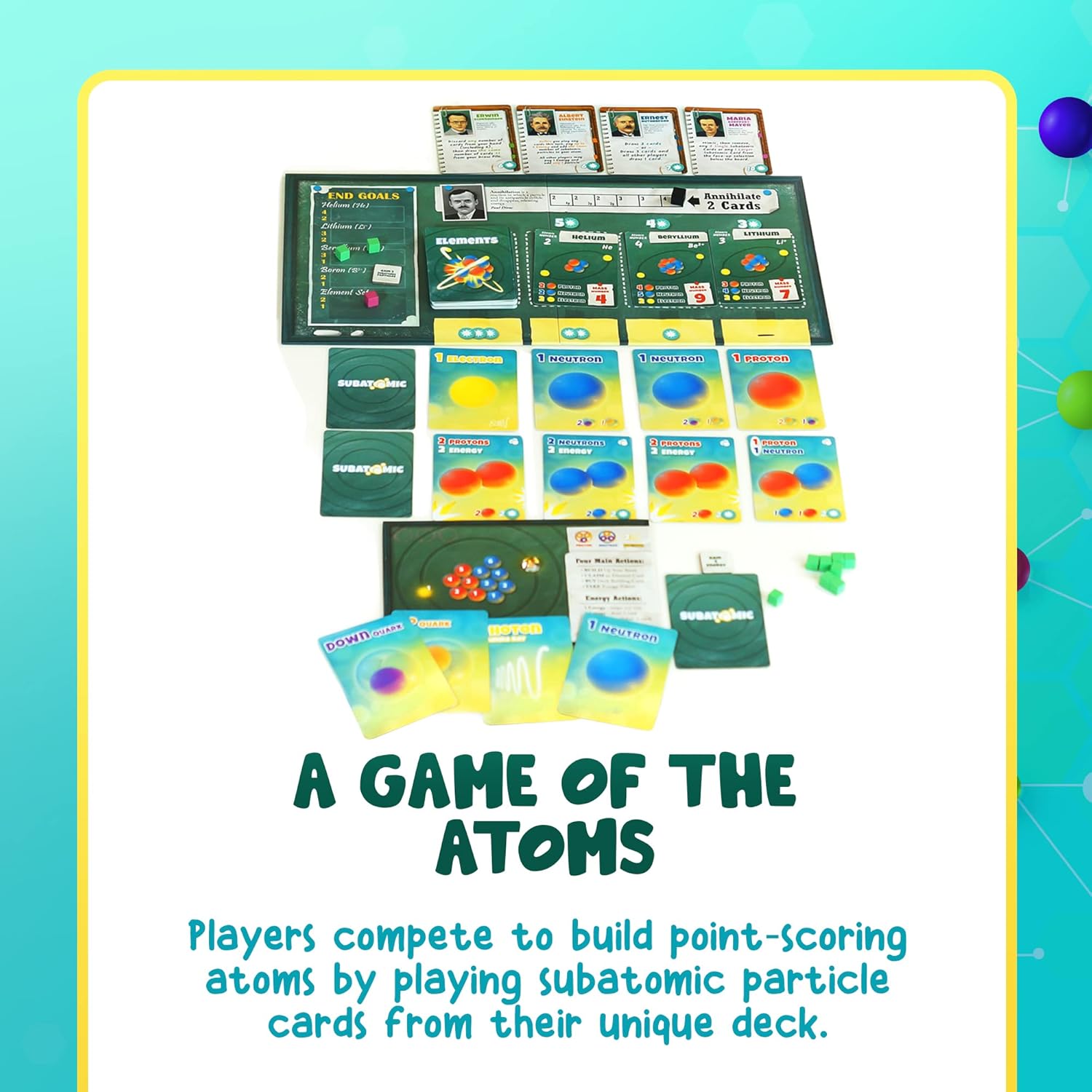
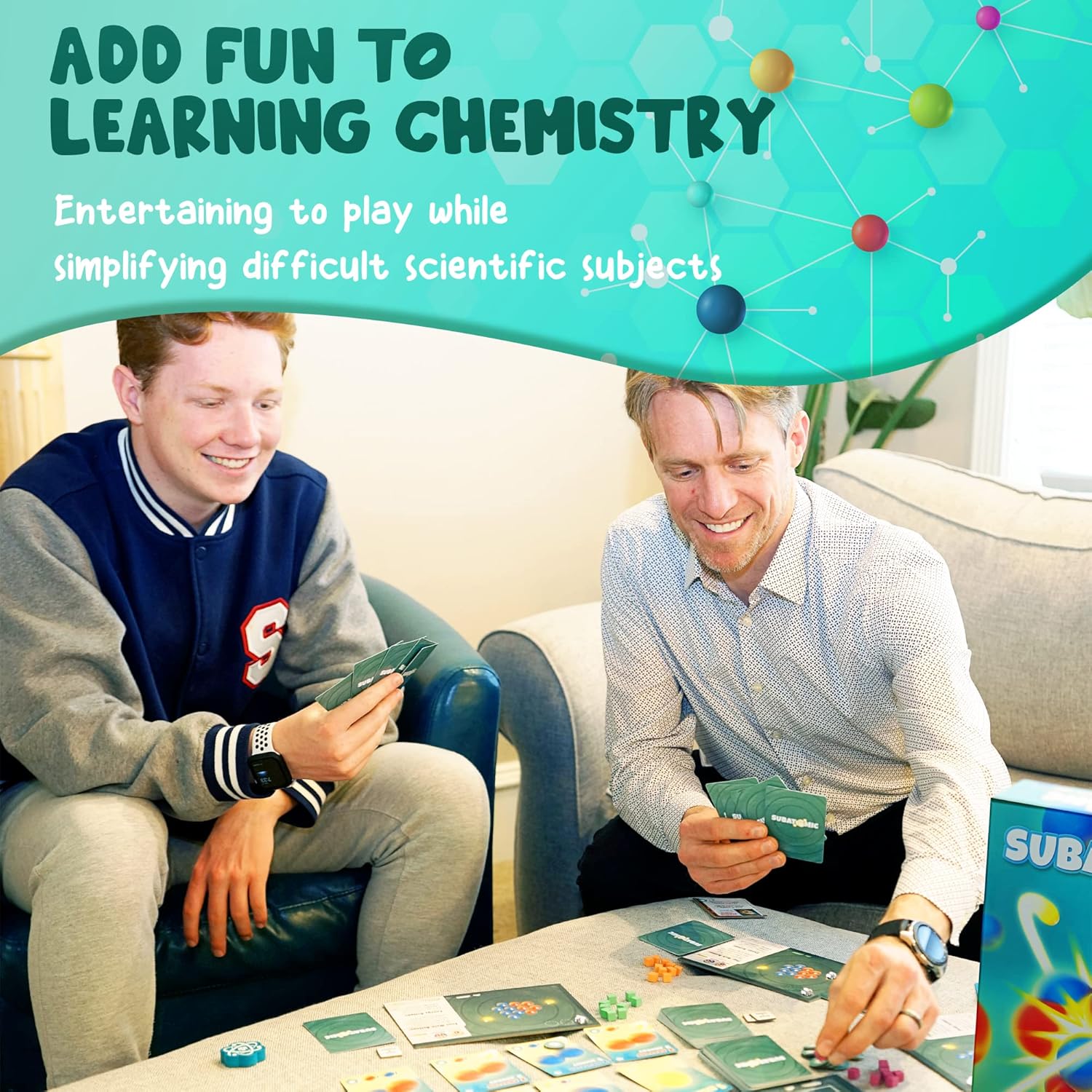
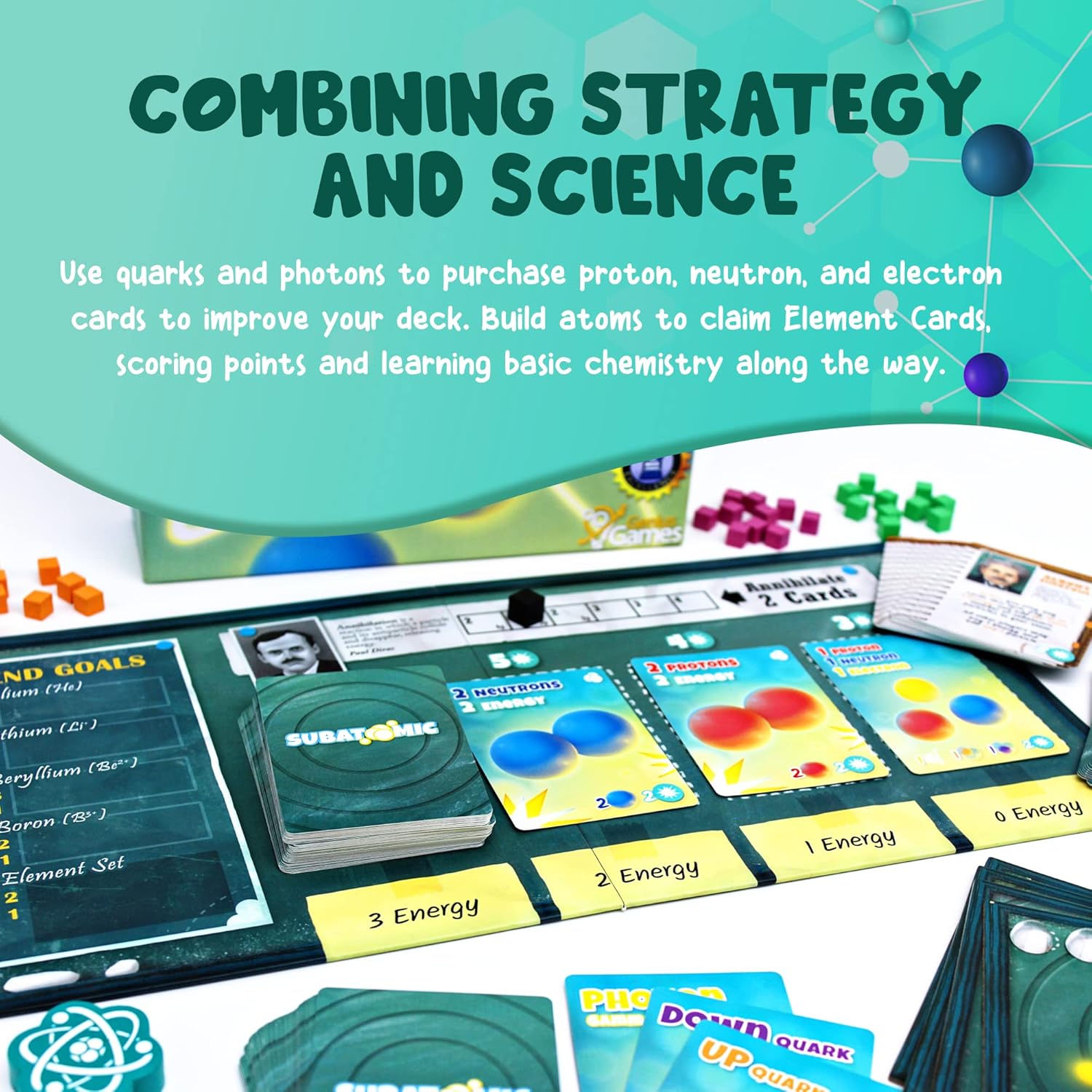
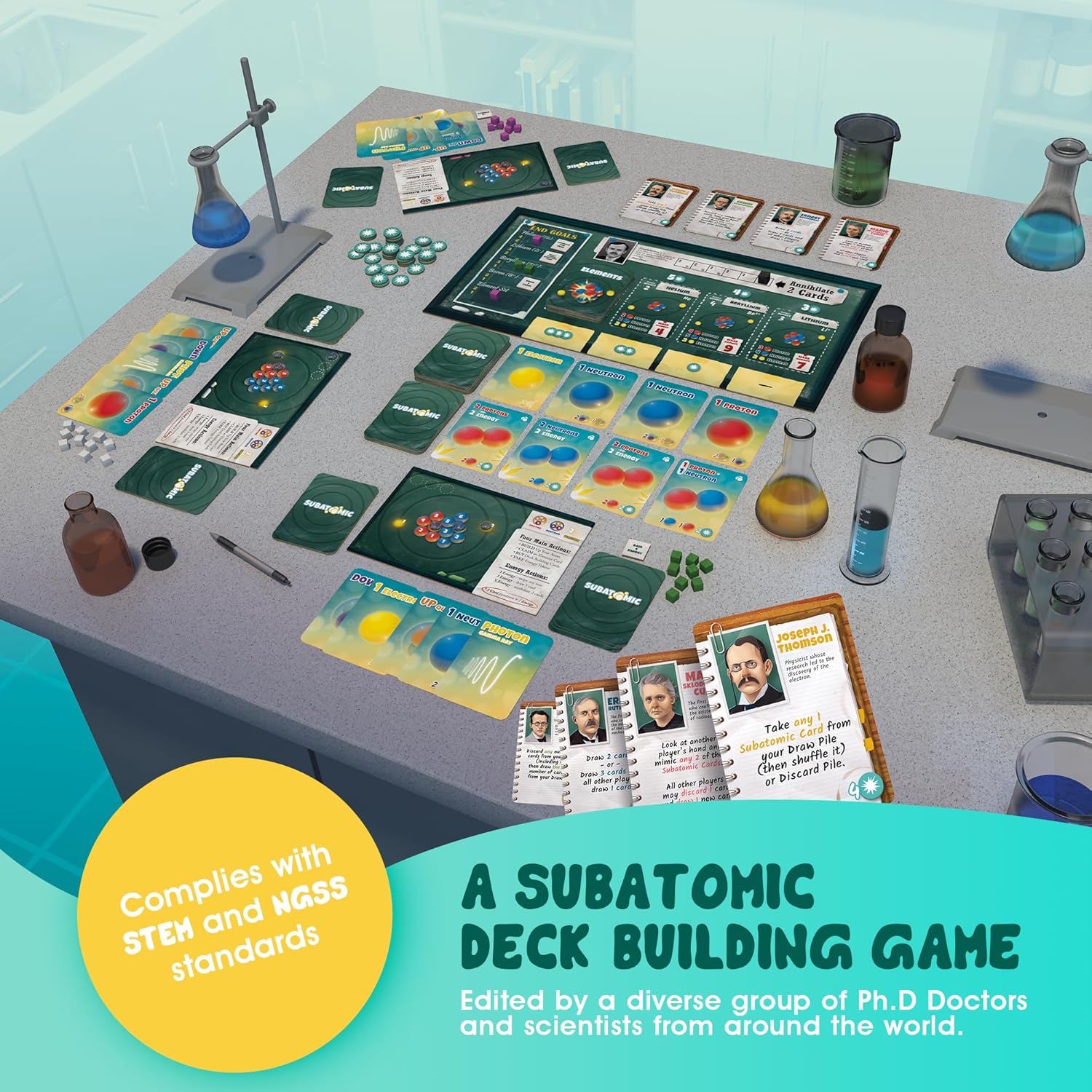
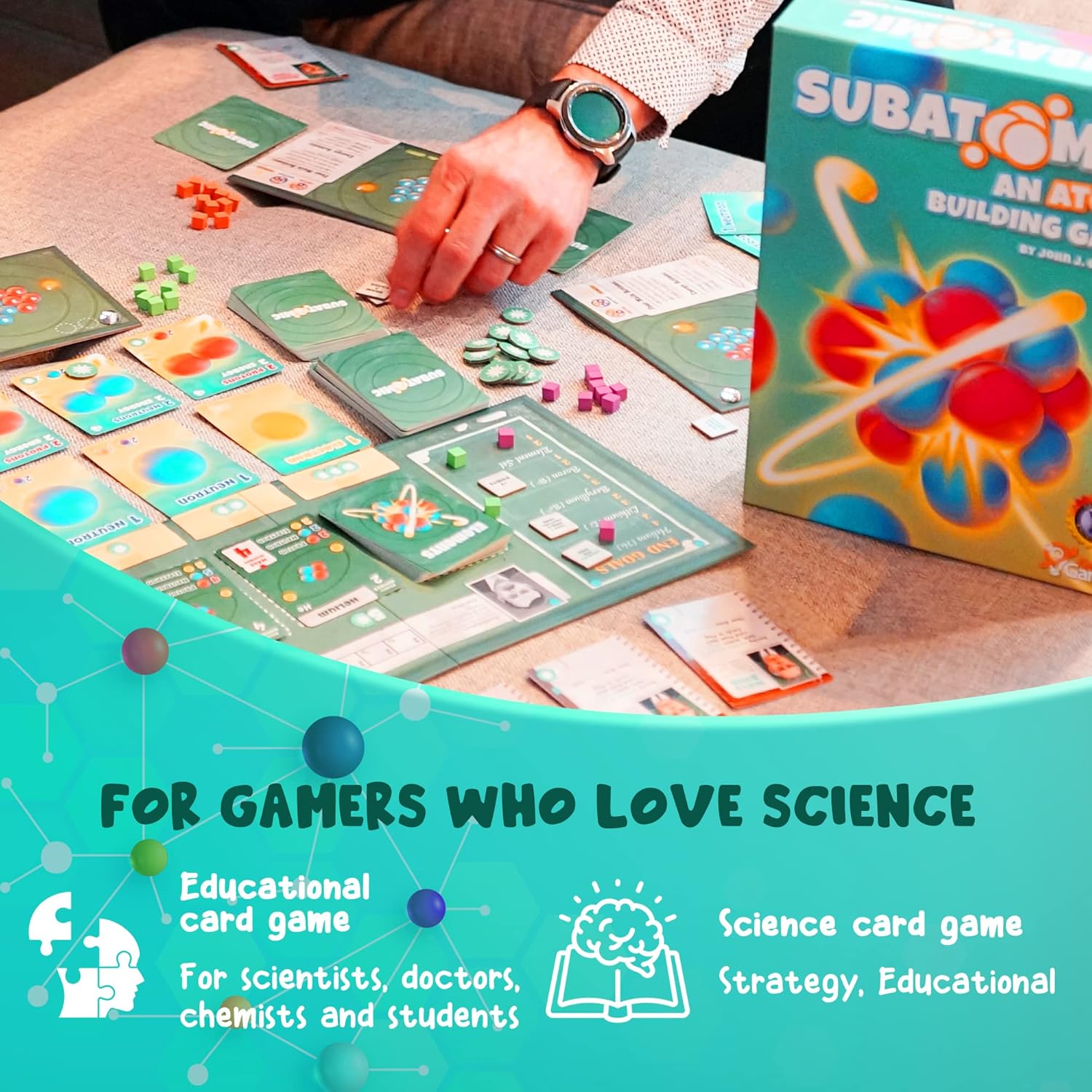

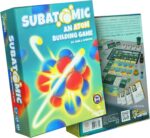
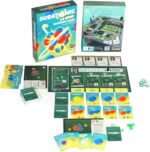
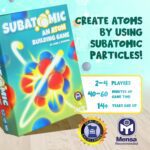
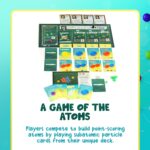

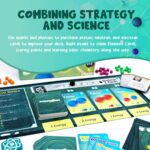
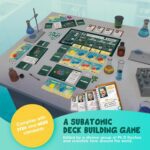




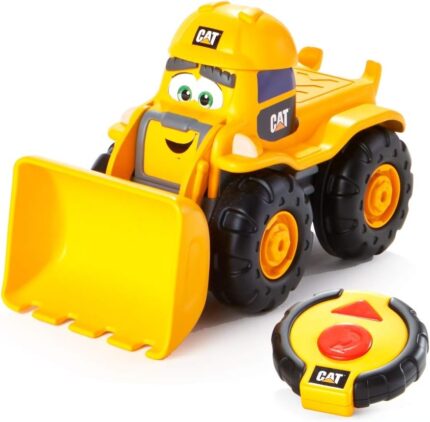

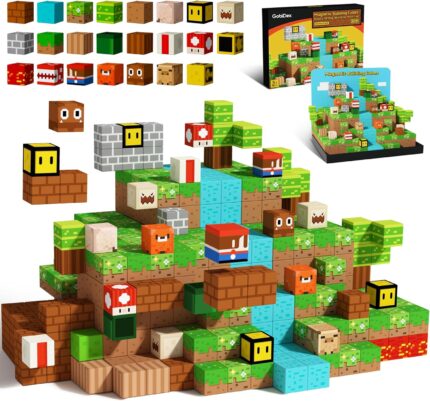

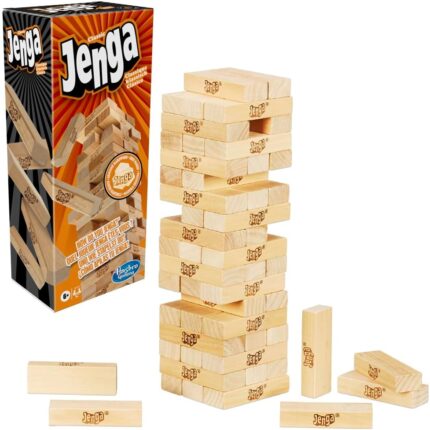

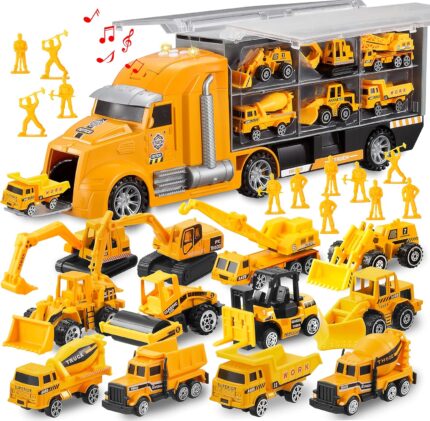

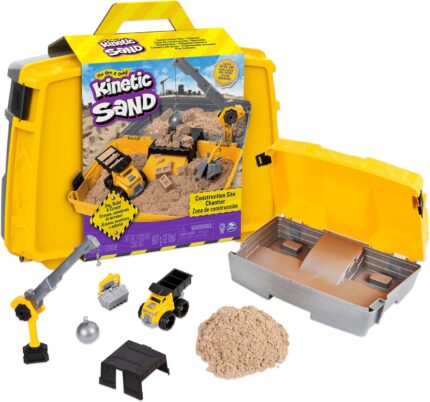

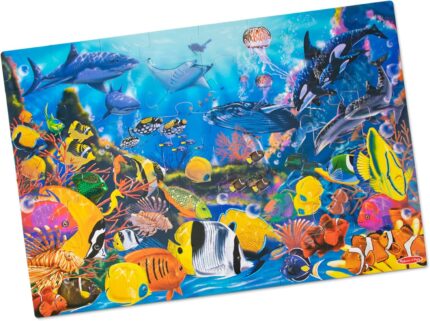

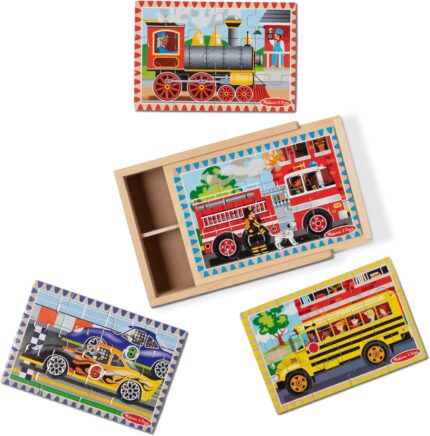

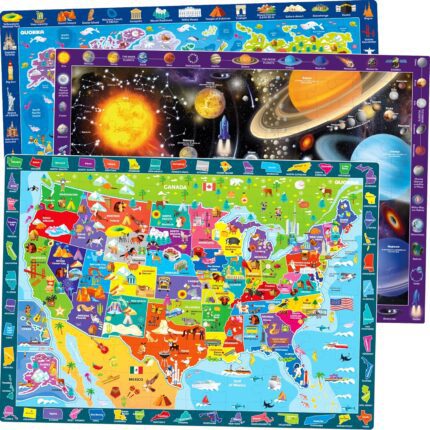
VSA –
Great science game
We love to play science based games as a family. I already owned a few chemistry and math based games and was looking for physics based game. this is really challenging game. Cards and pieces are of high quality and the game teaches a lot of atomic concepts. great for middle and high schoolers.
Andrea –
Gorgeous Game, Great Theme
This game was gorgeous straight out of the box. I literally gasped when I opened it – the components are beautiful and the box insert is laid out well. This is a deck building game, where you can add better cards to your personal deck and discard weaker ones in order to claim different elements. Aside from the rule book, there is another booklet that is all about the science behind the game. It explains the meaning of the science cards used in the game (quarks, protons, atoms, energy, etc.), describes the elements you are working to claim, and highlights the scientists used in the game (which play as power-up cards for your deck). I love the theme of the game, and since this is an area of science Iâve never understood well, I felt like I was actually starting to grasp the concept of building atoms to make elements while I played. The addition of different scientists as âpower upâ cards was brilliant, and their different abilities were really unique and added a really great twist to the game. Overall this is a well-made game with a great theme and fun game play!
Kindle Customer –
Fantastic Chemistry Game
I really like this game. It might be my favorite chemistry game from genius games. The only reason for 4 instead of 5 stars is that they don’t use all the Electrons for each atom built. I really would have loved if they had included the Electrons being filled in the appropriate orders/orbitals. But, still a great game that we will play often.
S. Kochel –
Only 4 elements that you get to make
I thought this game might be a fun way to learn about different elements and the atomic aspects of each (mass, number of particles, etc…), but there are only like 4 different elements you build in the game. Not impressed at all.
Suzanne Roq –
Great educational (and fun) game!
We have played this twice- ages 47, 11 & 10. Once you figure out how it’s played (which isn’t too difficult), it’s really fun. My biggest problem is that my kids like to run off between turns which makes the game drag out forever. I would really enjoy this with a group of adults. I plan to play tomorrow with just my 10 year old. She played it for the first time tonight and had no idea what was going on in terms of science but she caught onto the game play quickly and literally jumped up and down when she was able to pay for beryllium. Who knew? Great educational (and fun) game!
Bethany Messer –
Great Game!
My kids (10-14 yrs old) love the game! I love using games to supplement/reinforce their learning.The game was easy to learn and game play moves quickly enough no one gets bored between turns.
RJ Garrison –
Fun and Educational
Review I wrote for Opinionatedgamers.comWhen deck builders (Dominion, Legendary: A Marvel Deck Building Game and the like) were becoming popular I tried a number of them, but never felt like I was doing anything meaningful in the game. Pick up some cards, put down some cards. I kind of thought to myself, This is apparently not a mechanic I enjoy. Donât get me wrong. Itâs a solid mechanic and is extremely popular within the gaming community. It just didnât click with me and so I didnât embrace the concept. I never did poorly when playing deck building games, but I just didnât feel like I was really making any meaningful decisions (I want to buy as many of those 2 types of cards and then VP cards to win the game.) Draw 5, play 5, draw 5, play 5. Then I was introduced to Fantastiqua by Alf Seegert. Boom! I found a deck builder I enjoy! He added a little puzzle to the game that takes place in a clever fantasy world and I was in.Introduce Subatomic: An Atom Building Game by Genius Games. A deck building game where you get to do some particle physics and make atoms and elements without having to wear all the sweaty hazmat gear that make your glasses fog up! Add some up quarks with some down quarks or gamma rays together and create protons, neutrons and electrons! Add those together and create some elements. Is it magic? No! Itâs Science!Often in games based on science, you get a game with solid science, but crappy gameplay, or a game with solid gameplay but crappy science. Rarely do you get games that offer both solid science and solid gameplay. Enter Genius Games, who take science, mix with some solid game mechanics and come out with fun, scientifically educational, strategic games.In Subatomic, players begin with a small deck of up quarks and down quarks (elementary particles that make up protons and neutrons) and gamma rays (which make up electrons). You draw 5 cards, and have the ability to do any of the following:Purchase cards to make your deck stronger (neutron, proton or electron cards)Build an element (there are 4 different elements you can work towards, Helium, Lithium, Beryllium or Boron) by adding electrons, protons or neutrons to your atom player boardTurn cards in for energy tokens orClaim an element card.You can enlist the help of scientists by spending energy tokens to purchase scientist cards with the likes of Einstein, Madam Curie or Schroedinger (but not his catâ¦) amongst others. These help give players special abilities when creating their elements.Each time a player claims an element, they place 2 of their 10 goal markers on elemental spaces that will give them bonus points at the end of the game. Once all 10 of a playerâs goal markers are placed, players finish the round and the player with the highest number of points at the end of the game wins.COMPONENTS:The card quality is a good weight and quality, with easy to read, easily identifiable cards. The cardboard pieces, wooden cubes and particle markers (glass tokens) are of a good size and quality and the colors are easily distinguishable. The player boards and game board are a good quality and thickness and are easy to read. The rulebook is colorful, nicely laid out and easy to follow. My biggest gripe with the rulebook, however, is that the âGame Setupâ diagram is on the backside of the âGame Setupâ directions, so you have to flip back and forth between the two pages when setting up the game. It wouldâve been nice to have them on the same spread inside the rulebook. (Game setup once youâve set up once or twice is really not that difficult.) A really brilliant addition to the game is a rulebook-sized 6 page manual entitled, âThe Science Behind Subatomic An Atom Building Gameâ for science nerds. Or people that just want to knowâ¦MECHANICS:The deckbuilding (or Atom building in this case) mechanics work really well for the game. The addition of building your elements using the deck, thrown in with the different scientist abilities give the game a fun twist in the deck building genre.TIME & AGES:The game runs within the 40-60 minutes as listed on the box. This is the perfect time for what the game is and doesnât run to long or too short. It fits in that âjust rightâ for time. The ages listed on the box 14+ seems a bit high while the 10+ on the website seems a bit low, so Iâm recommending in the middle at 12+. To date I have only played with adults. I believe the game would play well with middle school and high school students, as well as adults, and might be great with students that are learning basic sciences. I used to run a board game group of 10-20 teens for a military library and this game wouldâve been a regular go-to for those playersARTWORK:The art in Subatomic is great. The artwork on the cards is bright, colorful and easily distinguishable. The player boards are nicely created and have a player aid on each board, which I greatly appreciate in any game. The first edition had cartoony artwork that was super cute, but the designer didnât want people to confuse the game with a younger kids game so the artwork was changed for the second edition but still works and looks great.FINAL THOUGHTS:While I find straight deck builders may not be my mechanic, throw a little twist and Iâm onboard. I quite enjoy this one and find it gets my mind working in trying to figure out what I can best do with the hand Iâve drawn. I think this might help any budding, school aged scientist have fun and maybe learn (a little.) The addition of âThe science behindâ book is a really nice touch and explains the concept behind the science and how it differs from science within the confines of the game. The game itself is fun if you donât happen to be a science nerd, and you could learn something as well!THOUGHTS FROM OTHER OPINIONATED GAMERSPatrick Brennan: Itâs a workable little deckbuilder game. The theme is both excellent (if youâre a science nerd) and completely non-engaging (if youâre anything but). Your deck starts with quark and photon cards and you use these to buy neutron, proton and electron cards. Once your deck is strong, you start playing these to build up your proton/neutron/electron count that allows you to build atoms (rather than using them to buy more cards) as scoring atoms wins the game. Start again, build another atom. While it works, it seems like thereâs going to be minimal variety from game to game, and any deck-thinning strategy that ends up proving successful is going to be repeated. Itâs slow progress building up, but then itâs rush, rush, rush for points â once you have a strong working deck you just keep playing it through. The game ends quickly as a result, which isnât a bad thing. Swingy though.
metoo –
Received as described
Bought for a Christmas gift. Still a few months before being opened.